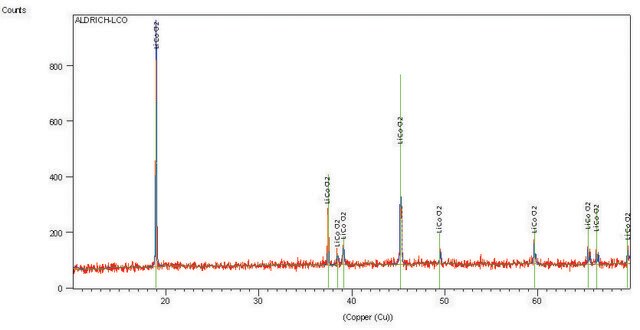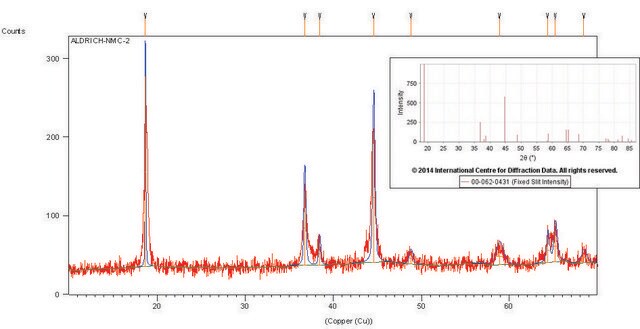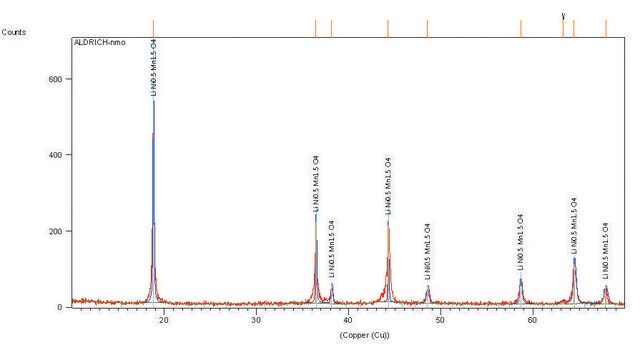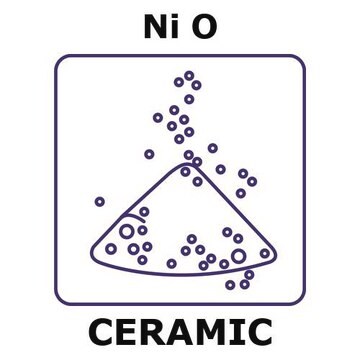757365
Lithium nickel dioxide
powder, <3 μm particle size (BET), ≥98% trace metals basis
Sinonimo/i:
LNO, Lithium nickel oxide, Lithium nickelate
About This Item
Prodotti consigliati
Grado
battery grade
Saggio
≥98% trace metals basis
Forma fisica
powder
PM
Mw 97.63 g/mol
Composizione
LiNiO2
Dimensione particelle
<3 μm (BET)
Punto di fusione
>1,000 °C (lit.)
Densità
4.62 g/cm3 (lit.)
applicazioni
battery manufacturing
InChI
1S/Li.Ni.2O/q+1;;;-1
VROAXDSNYPAOBJ-UHFFFAOYSA-N
Descrizione generale
Applicazioni
Note legali
Prodotti correlati
Avvertenze
Danger
Indicazioni di pericolo
Consigli di prudenza
Classi di pericolo
Carc. 1A Inhalation - Skin Sens. 1 - STOT RE 1
Codice della classe di stoccaggio
6.1C - Combustible acute toxic Cat.3 / toxic compounds or compounds which causing chronic effects
Classe di pericolosità dell'acqua (WGK)
WGK 3
Punto d’infiammabilità (°F)
Not applicable
Punto d’infiammabilità (°C)
Not applicable
Certificati d'analisi (COA)
Cerca il Certificati d'analisi (COA) digitando il numero di lotto/batch corrispondente. I numeri di lotto o di batch sono stampati sull'etichetta dei prodotti dopo la parola ‘Lotto’ o ‘Batch’.
Possiedi già questo prodotto?
I documenti relativi ai prodotti acquistati recentemente sono disponibili nell’Archivio dei documenti.
I clienti hanno visto anche
Articoli
Professor Qiao’s laboratory lays out recent advances in conversion type lithium metal fluoride batteries. This review explores key concepts in developing electrochemically stable microstructures for wide Li-ion insertion channels.
Electrode Materials for Lithium Ion Batteries
Li-ion batteries are currently the focus of numerous research efforts with applications designed to reduce carbon-based emissions and improve energy storage capabilities.
The critical technical challenges associated with the commercialization of electric vehicle batteries include cost, performance, abuse tolerance, and lifespan.
Il team dei nostri ricercatori vanta grande esperienza in tutte le aree della ricerca quali Life Science, scienza dei materiali, sintesi chimica, cromatografia, discipline analitiche, ecc..
Contatta l'Assistenza Tecnica.















